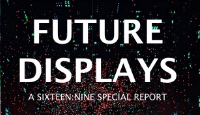
Broadsign Ends Long Holdout, Joins Crowd Of CMS Software Firms Supporting Smart Displays
May 9, 2022 by Dave Haynes
-
Streamlined network operations: Manage all inventory from one central location and support nearly any mixed-screen network;
-
Smart screen optimization: Harness the most powerful OOH advertising platform to get the most out of smart screen inventory;
-
New revenue opportunity: Unlock ad-based revenue by opening up SoC-equipped screens, either from direct or programmatic OOH channels;
-
Advanced network scalability: Reliable, scalable, and automated workflows make it easy to grow networks without bounds.
“SoC represents the next big opportunity for Broadsign customers to expand their OOH footprint and reduce their hardware investment,” says Maarten Dollevoet, Chief Revenue Officer, Broadsign. “We’re thrilled to bring all the automation, inventory optimization, and monetization opportunities that the Broadsign platform offers to SoC solutions from major industry players like LG, Samsung and BrightSign via this launch.”
The early marketing for smart displays tended to focus on how having a commercial display with a built-in media player removed the need and substantial cost for a separate media player, but in reality the most that really did was lower the cost. The SOC media player component was just added to the display cost, and as companies standardized on smart displays, it became increasingly hard to discern what that added cost was, because there were no “dumb” versions of the same displays to compare against and get a price delta.
The more contemporary arguments for these smart displays:
- they go in faster because there are fewer components to put in;
- are tidier installs because of the lack of cables;
- lower field service costs because there are no things like HDMI cables to come loose.
The anti-SOC crowd argues going SOC boxes software companies and end-users into proprietary platforms, limiting flexibility and having their development roadmaps contingent on the roadmaps of the display companies. They also worried, earlier on, whether the display companies would stick with SOC, though that has clearly diminished. All the major manufacturers now have substantial smart display offerings, with Sharp NEC the wild card with commercial displays that have trap doors to snap in optional smart modules, including an embedded BrightSign board and a Raspberry Pi 4 module.



I’ll hazard a guess here that this was probably always part of the roadmap for Broadsign, but with several pre-pandemic acquisitions (including AYUDA) they had to retune the engine and get things right under the hood before continuing down the SOC road. Just a guess…
We have worked with Samsung SOC for some 5-6 years (from Tizen Sssp2 up to present Sssp6) with good result. For one client we hoste some 450 screens with this solution. The only downside as I see it is when you want to upgrade your solution/functions, you’re obligated to ajust development to the early releaes. This is of course true with whatever solution, but since the devolpment have most likely been greater in the SOC-industry, I’d say you are a bit more limited – at least if you planning to convert even existing screens.